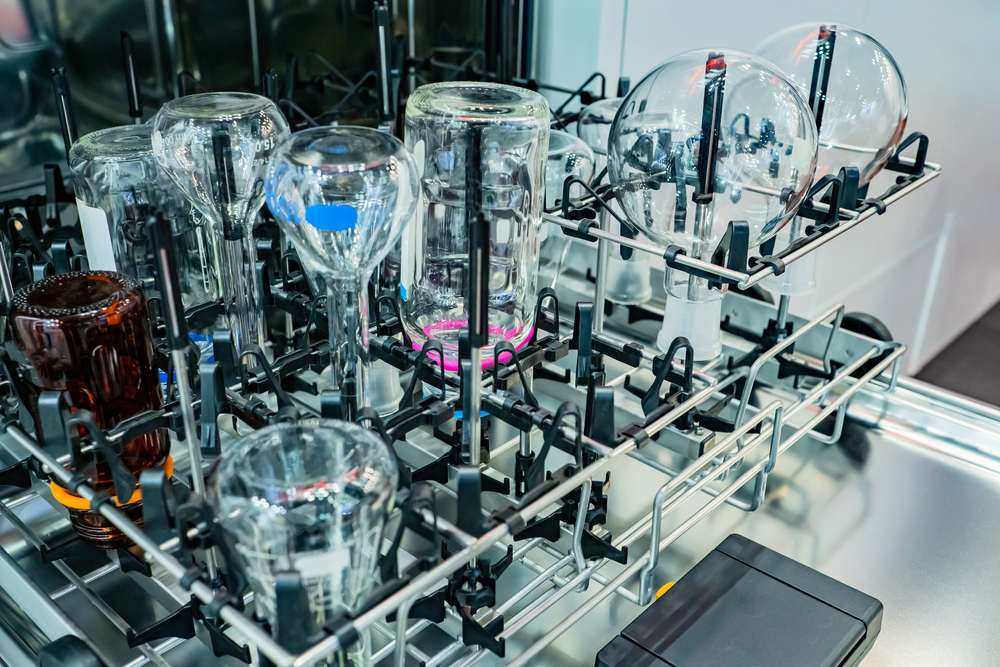Sterilization is a process that destroys and removes all forms of life present in a certain region. It accomplishes this by use of physical or chemical means. Autoclaves, for example, steam-sterilize by using high pressure and heat.
Another sterilization-by-heating technique uses infrared to kill microorganisms in a few seconds using temperatures up to 1500°F/815°C. On the chemical front, hydrogen peroxide can break down cellular tissue.
Sterilization can also eliminate quasi-living biological agents, such as viruses and prions. Failure to remove viruses and prions from labs and cleanrooms can present serious problems for patient and personnel safety. Therefore, it’s important to select the most appropriate sterilization technique.
Lab Sterilization vs. Disinfection
Sterilization is different from disinfection. It kills, deactivates or eliminates all forms of life or biological agents. Disinfection refers specifically to the removal of harmful biological agents. Sterilization may be necessary in health-critical situations like hospitals. On the other hand, disinfection is a process we use in our kitchens or bathrooms.
Forms of Physical Sterilization
Many techniques can sterilize surfaces on physical and digital lab equipment. First, heat and pressure can remove substances from instruments and equipment. Biological compounds, like some proteins and viruses, present challenges during sterilization. For example, prions can resist heat and pressure, as well as many chemicals and enzymes.
Next, ionizing radiation is also an efficient sterilizer. It acts to release electrons from molecules. Many transmissible agents require DNA and RNA for their propagation. Therefore, severing the nucleic acid backbone can be a useful means to reduce their transmission. This technique has proven effective for safe disinfection. However, one must pay close attention to the removal of these compounds, as bacterial and fungal spores resist most irradiation techniques.
Another technique uses Ultra-Violet C (UVC) lamps. UVC rays from the sun receive natural filtering by the earth’s atmosphere. Microorganisms have no natural resistance to the damage they cause. When UVC lamps are used for sterilization, they damage cells and disrupt DNA sequencing. It is safe for personnel as long as they avoid exposure to the lamp.
To be effective, the lamps must have direct line-of-sight with the object. Other considerations include the exposure time and lamp intensity. Objects further away from the lamp may not receive proper sterilization. Over time, UVC rays can damage some plastic materials.
Lastly, chemical filtration of compounds is useful for disinfecting media in food testing labs. This disinfection technique typically relies on the exclusion of biological materials based on particle size. While this is an adequate procedure for reducing contaminants, it must be used in conjunction with other sterilizing techniques to ensure that the contaminants are not reintroduced during a downstream process.
Common Chemical Sterilizers
Ethylene Oxide (EtO) often sterilizes objects that are sensitive to temperatures greater than 140°F/60°C and/or radiation. These include plastic components or supplies, optics and electronics. High temperatures can easily damage plastics and render the device unsuitable for its original application. Thus, workers often use EtO to sterilize equipment, single-use catheters and endoscopes. The chemical has a disruptive effect on DNA. This renders microorganisms unable to reproduce. While this sterilization procedure produces good results, EtO is a known carcinogen and presents serious risk to personnel without careful monitoring.
Hydrogen Peroxide Vapor (HPV) is another chemical that’s effective in removing biological agents from the surfaces of PPE, furniture, equipment and other difficult-to-sterilize surfaces. The ability of the vapor to permeate the area can be effective to sterilize pass-through chambers and devices in hospital and manufacturing settings. Personnel need to be careful of over-exposure, as it can have damaging effects. While UVC irradiation can also work for these purposes, direct visual contact doesn’t inhibit HVP.
Conclusion
Many of these methods are capable of effectively sterilizing surfaces alone. However, they are commonly used in combination with other agents to develop an effective sterilization protocol. We help countless labs maintain the highest sterilization standards. Decontaminating surfaces and devices is a fundamental part of our laboratory services. For more information on SEPS or our services, contact us today.

| Call for Immediate Lab Services |
|---|
| Long Island, Nassau & Suffolk County Call: 516-333-4006 |
| The Bronx, Manhattan, Brooklyn, Queens, & Staten Island Call: 718-885-0833 |
| Albany & Southern New York State Call: 800-564-5513 |
| Piscataway, Northern & Central New Jersey Call: 800-564-5513 |
| Danbury Connecticut & Surrounding Areas Call: 203-748-7343 |
24/7 Emergency ServiceCall: 1-800-564-5513 |